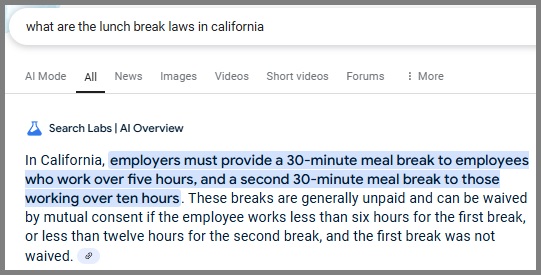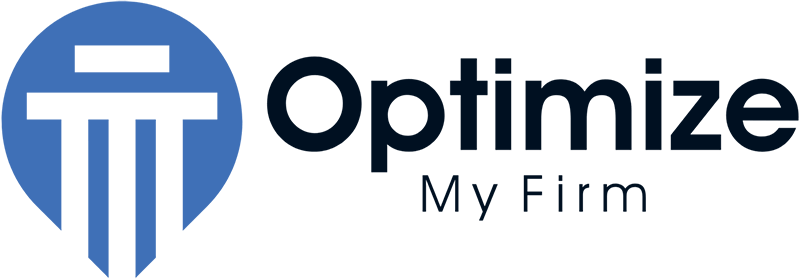Optimize My Firm’s internal data shows significant reduction in traffic and click through rates when Google AI Overviews are present for informational legal search queries.
Here is a very typical example of a website which has had rankings and impressions remain the same, yet CTR has been reduced.

If you look solely at traffic, you’d think the site is losing traffic for one reason or another. And it is. However, you can have more content, increasing rankings, and be losing total clicks (traffic):

That firm is doing fine and has great visibility for transactional search queries and local searches – they just have a significant amount of informational content on the site.
What Exactly are “Google AI Overviews”?
A Google AI Overview is a feature in Google Search that uses AI to generate concise, informative summaries of search results. AI Overviews appear at the top of search results pages (SERPs) and are designed to provide users with a quick understanding of a topic, (usually) along with links to more detailed sources.
On May 10, 2023, Google announced their Search Labs experiment, SGE (Search Generative Experience). We test drove it immediately and wrote about it here: Will Google Generative AI Impact Law Firms?. Google AI Overviews launched publicly May 14, 2024, and expanded into many more countries on August 15, 2024.
Throughout 2024 and 2025, Google has brought AI Overviews to more and more search results, and also improved them on March 5, 2025 with a Gemini 2.0 upgrade.
When Do AI Overviews Appear?
As of April 2025, it’s estimated that AI Overviews (AIO) appear in approximate 30% of searches.
The search query type greatly impacts if AIO triggers or not. For example, AIO triggers more often for informational search queries than for navigational search queries.
- Example of an informational search query: “What are the lunch break laws in California?”
- Example of an informational search query: “Law Offices of John Doe”
Many law firms with informational content on their site have lost traffic due to Google AI Overviews.
Using our above example search query of “What are the lunch break laws in California?” , we can see how Google provides an answer right at the top of search results:

But Google Said AI Overviews “Increase” Click Through Rates (CTR)!
In an interview published April 21, 2025 by Nilay Patel, editor-in-chief of The Verge, Google CEO Sundar Pichai said “In fact, if you put content and links within AI Overviews, they get higher clickthrough rates than if you put it outside of AI Overviews.”
The only problem is, this is false, at least for informational search queries, and according to our internal data. An ahrefs study published April 17, 2025 by Ryan Law & Xibeijia Guan analyzed 300,000 keywords and found that the presence of an AI Overview in the search results correlated with a 34.5% lower average clickthrough rate (CTR) for the top-ranking page.
For the vast majority of law firm websites, AI Overviews decrease CTR, which is the opposite effect that Featured Snippets provided.
What About Google AI Mode?
Google announced AI Mode on March 5, 2025. At the time of this article, it’s still an experiment in search. We suspect this will roll out to everyone and be an option in search, which has it’s place, similar to ChatGPT, not needed often but extremely helpful because you can ask followup questions and AI Mode retains the context.
AI Mode scans the web, performs multiple searches, then generates a comprehensive answer. Yes, it is regurgitating your content, but in good news, it at least links to it’s sources.

As seen above, AI Mode is repeatedly citing a page about California’s lunch break laws as it comprehensively covers the topic (pro tip: if you pay attention to Google’s “Also Asked” section, you can discover subtopics to build into your main pages or child pages).
In Good News, People Still Need Lawyers.
It’s nice when someone reads about meal breaks, hasn’t been receiving them, and is sitting on an Employment Lawyer’s site, and they get the lead. However, that’s the best case scenario and these cases are few and far between.
In good news, if someone needs a lawyer, they’re still going to search for one and contact one. So, while Google is indeed taking some traffic away, the world is not ending, and law firms still benefit from content.
